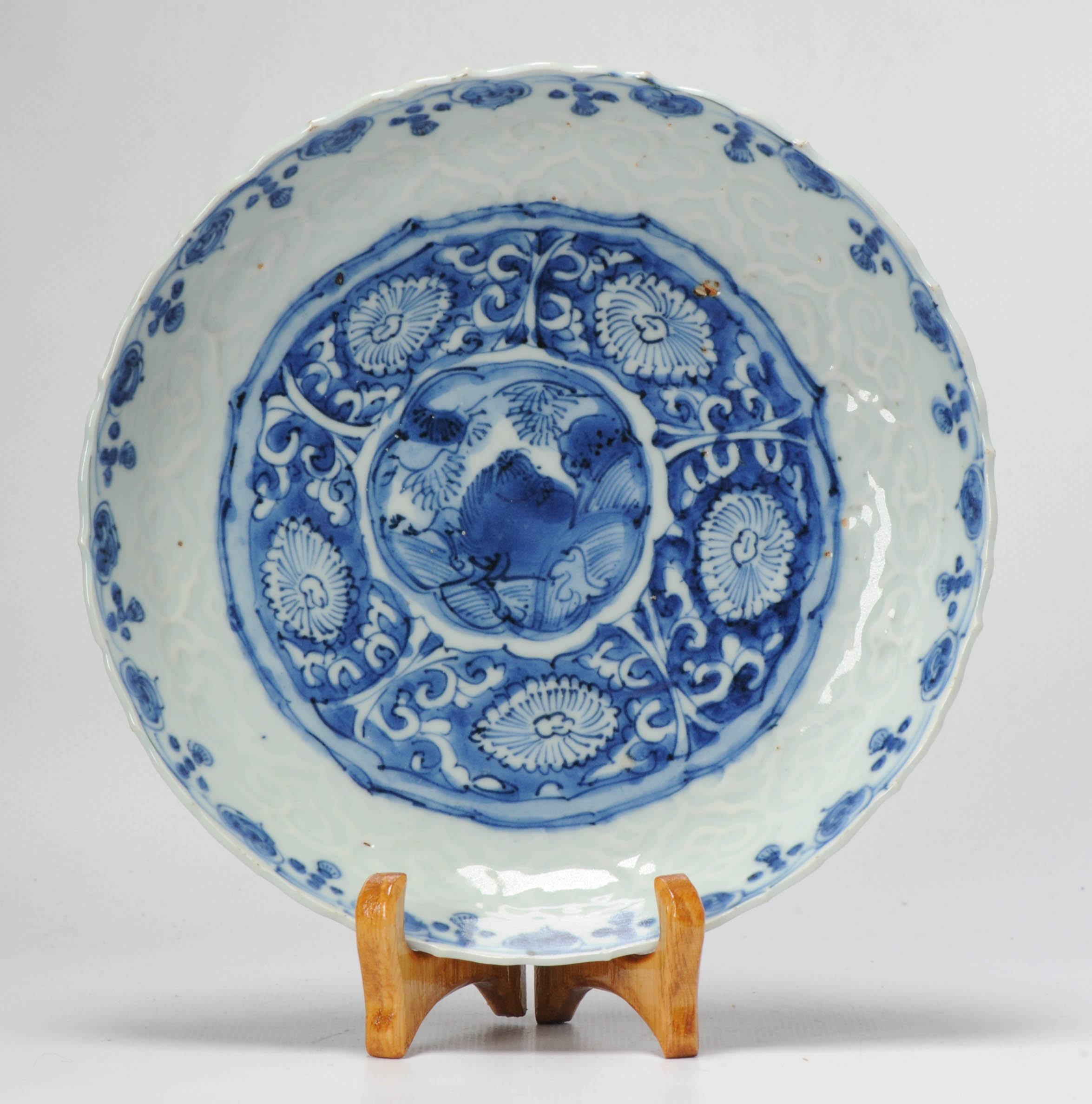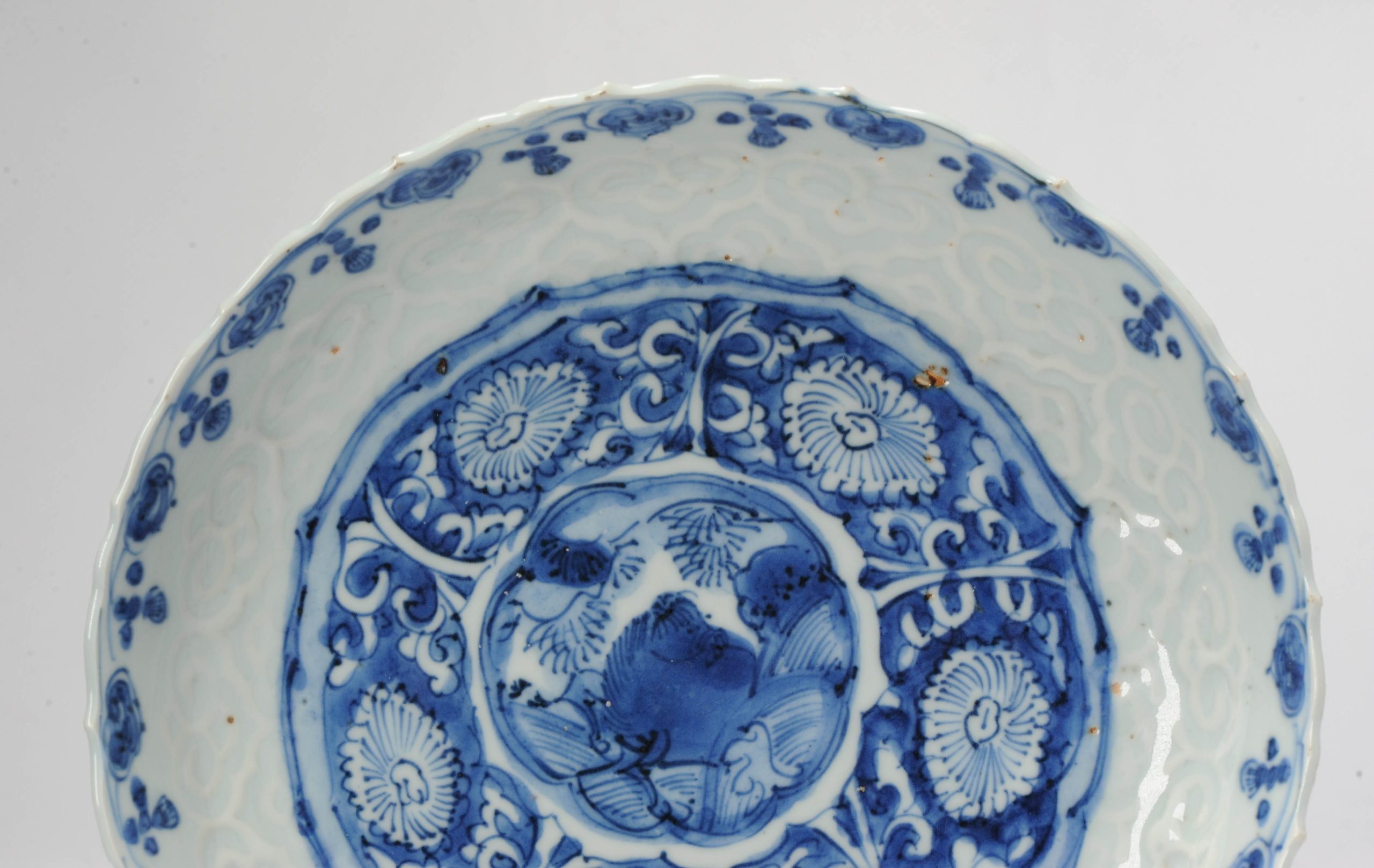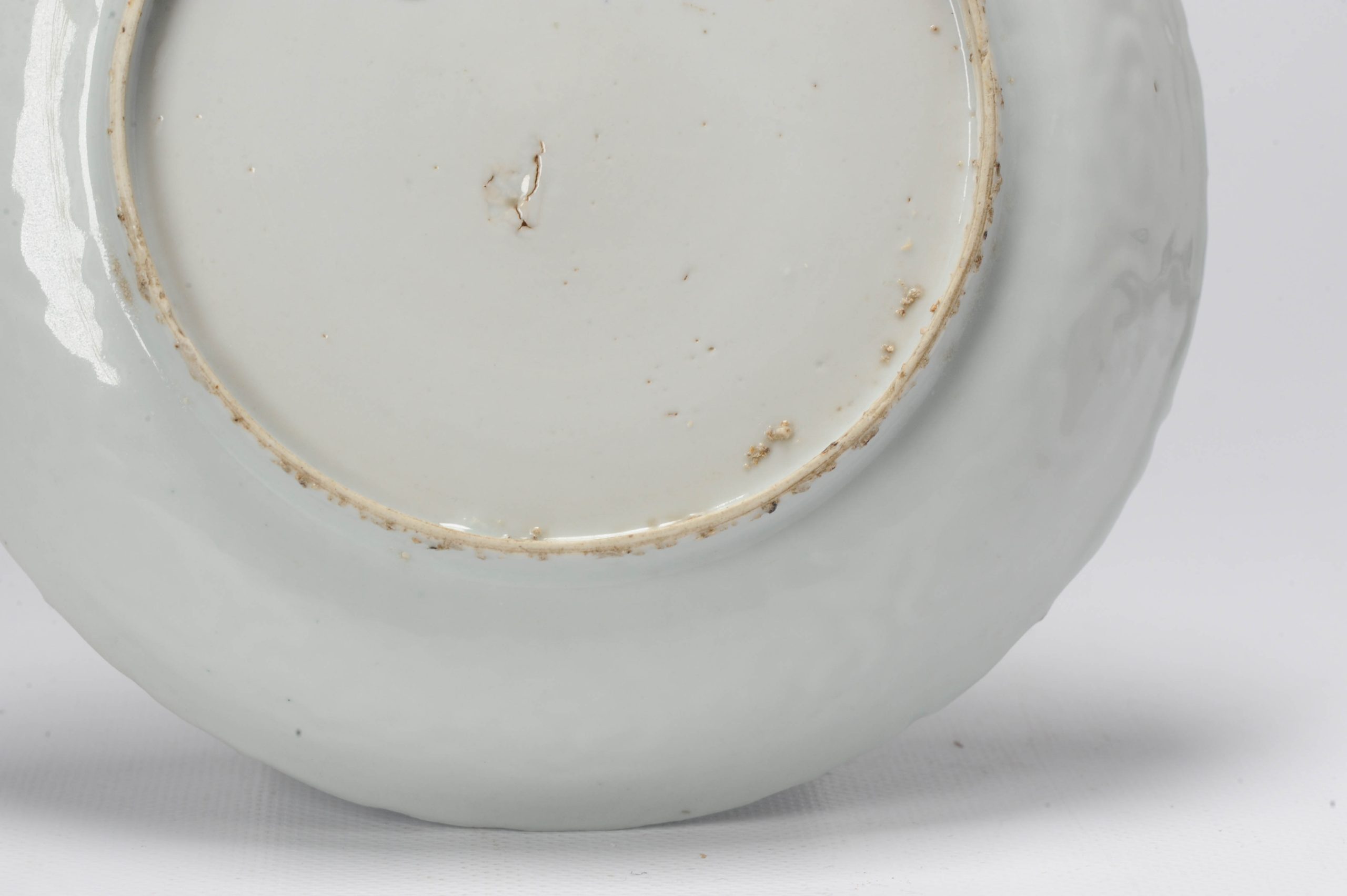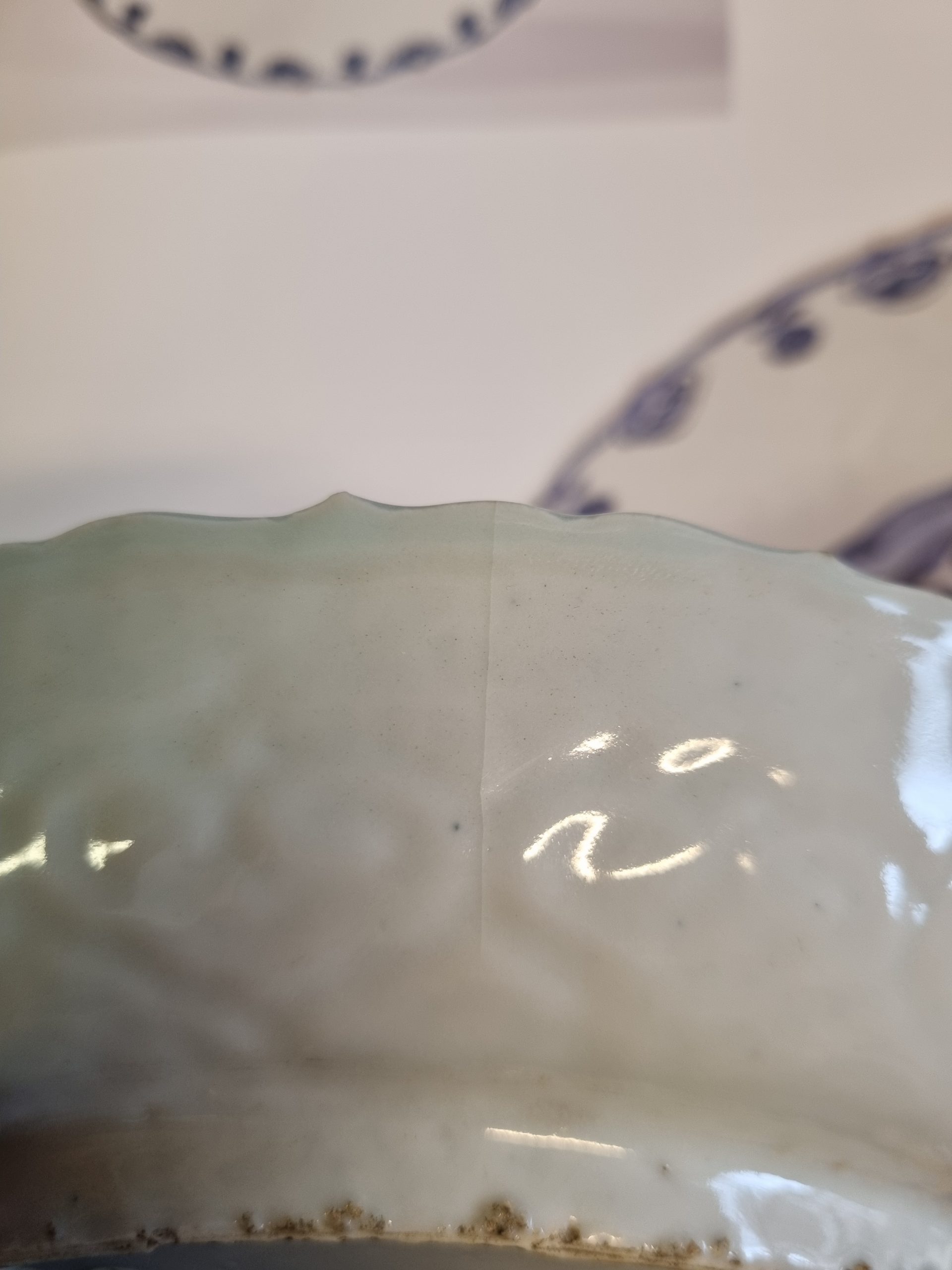Antique Chinese Ca 1590-1600 Chinese Porcelain Ming Transitional Kraak Plate HORSE
Out of stock
Condition Report: Overall Condition 1 line from rim and some very minimal rimfrits. Size: 197x41mm DiameterXHeight
Sharing with you this thinly potted saucer-dish with gently rounded sides, a flared rim with a bracket-lobed edge and a high foot ring. It is finely
painted in deep shades of underglaze cobalt blue, darkening in some areas to a blackish blue. The centre shows an eight-pointed bracket-lobed
medallion enclosing a horse with its head turned to one side flying amidst white-crested waves, encircled by four chrysanthemum flower sprays
separated by scrolling foliage in white on blue. The rounded cavetto and rim are left plain white and are moulded in low relief with overlapping
rows of stylized ruyi-heads, all outlined in white slip. A border of ruyi-heads alternating with tassels pendent from a blue line is painted below
the rim. The recessed base is glazed and the foot ring unglazed.
The quality of potting and painted decoration of this saucer-dish is noteworthy. It has an extremely thin porcelain body and a ruyi-
head design moulded in low relief on the cavetto and rim, which is finely outlined in white slip. Only a small number of kraak saucer-
dishes of this type with similar underglaze cobalt blue decoration at the centre and rim have been recorded thus far. An example
of about this size (21 cm diam.) with a closely related decoration but depicting the flying horse with its head looking forward was
excavated in Indonesia in 1986, and is now in the National Museum in Singapore.’ Another saucer-dish, of slightly sm
size (20.2 cm diam.), with the head of the horse in the same position as in the present example, has five chrysanthemum flower-heads (instead of
four) with white centres instead of blue). The scrolling foliage motif in white on blue encircling the
flying horse resembles that seen as an overall decoration on a kendi in the Topkapi Saray Palace in Istanbul, which has been dated to
the third quarter of the sixteenth century.
Jingdezhen to the World: The Lurie Collection of Chinese Export Porcelain from the Late Ming Dynasty (Ad Ilissum) 1st Edition by Teresa Canepa (Author) page 126-127
Horse
Horses as pasture animals feature more in ancient times when the center of civilization was further north around the Yellow River. Horses came from central Asia, Mongolia and Tibet. In the ancient Yi Jing the horse represents ’yin’ compared to the dragon ‘yang’. The god of war Guan yu (Guan di) rode a red-haired horse. Horses are associated with the element metal and west. In symbolism a horse laden with goods is a wish for a government post. It often also indicates swiftness. A monkey hóu on horse back expresses the wish for promotion quickly as hóu is a noble rank and mǎ shǎng ‘on horseback’ is a metaphor for ‘arrive quickly’. The horse occupies the position of South on the Zodiac Compass.
Source: Stallard, R. Chinasage: All about China. Retrieved from the Chinasage website.
These kind of dishes are will described in the literature, Similar piece pictured in for example:
1 Rinaldi, 1989, p. 74. pl. 46.
2 Vinhais and Welsh, 2008, PP. 92-94, no. 3.
3 Krahl and Ayers, vol. II, 1986, p. 665, no. 1045A very nicely decorated plate with a central medaillon show a gallopping horse in the waves. Surrounded by flower scrolls. The cavetto is partially enriched with anhua/hidden decoration. The border with flowers. Unmarked at base and on a high footring.
—————————————————————————————————————–
We start an auction every week on thursday, ending the next sunday;
https://www.ebay.com/str/antiquefromshangrila?LH_Auction=1
We combine shipment and have over 2200 fixed listings in store,
always good to take a look if you see other items you like to save some shipping:
https://www.ebay.com/usr/theceramics_and_collectibles
All will be packed neat and sent track and trace and insurance. Registered airmail.
Packages are always shipped on the next wednesday.
If there is a specific hurry please contact us.
——————————————————————————————————————[:]
Additional Information
| Weight | 5 kg |
|---|---|
| Region of Origin | |
| Primary Material | |
| Type | |
| China Dynasty Period | |
| Decoration Type / Colour | |
| Century | |
| Condition Report | Overall Condition 1 line from rim and some very minimal rimfrits. Size: 197x41mm DiameterXHeight |
| Material | |
| Emperor |













